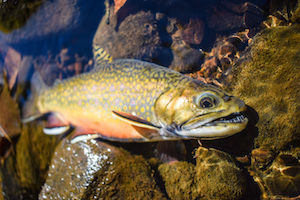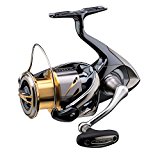Brook Trout Autumn Fishing

 fall is the spawning season for Brook Trout
fall is the spawning season for Brook Trout
As the water temperature drops, in the fall months Brook Trout return to the surface. They leave the deep pools and riffles of rivers and the deep parts of the lake.
When Fishing Starts
Forget the calendar when trying to time fall. Animals and fish don’t use the calendar so pay careful attention to seasons changes.
The first indication that fall has arrived is the changing winds with cooler brisk temperatures. In the south this can occur as late as October. In Central Ontario it can happen as early as September 1st. And in the north it can happen as early as late July or early August. Temperature changes can be sudden with the warm temperatures never returning.
The second sign of fall is a sudden drop in water temperature, which usually occurs after a major rain storm that stirs up deep water.
As the days are longer and the sun not as strong, the water never warms up to where it was before and continues its cooling trend into winter.
Best Fall fishing lures
*Small inline spinners work well in autumn. Blue Fox make a good range of small spinners and spoons. It doesn’t matter too much which lures you choose so long as the colors are bright.
Brook Trout Fall Spawning
If catch and release is important to you, avoid baits as the Brook Trout survival rate is much lower than using artificial lures.
As fall is the spawning season for Brook Trout, we highly recommend releasing the Brook Trout caught in rivers and streams, especially if a female is caught.
Brook Trout are very finicky in picking spawning grounds so keeping them can adversely effect their populations in small streams and rovers.
Catch and Release Tips
In order to increase the survival rate of Brook Trout after being released, follow these three simple steps.
- use barbless hooks
- avoid live bait
- before letting the fish go, cradle it in the water, letting the current pass over its gills. Once ready, it will swim away.
The techniques for river fishing for Brook Trout are very similar to techniques for smallmouth bass. You'll have a lot of fun with both. They can easily be applied to both. So why do we rewrite them here? The answer is simply to focus on Brook Trout.
Those who are familiar with Brook Trout will say, and for good reason, that there are differences and knowing these will make you a better angler.
However for a novice angler, it's easy to learn by comparing the techniques you're familiar with from another species. Contrasting the subtle differences will happen over time as you get more experienced with a particular fish like the Brook Trout.


